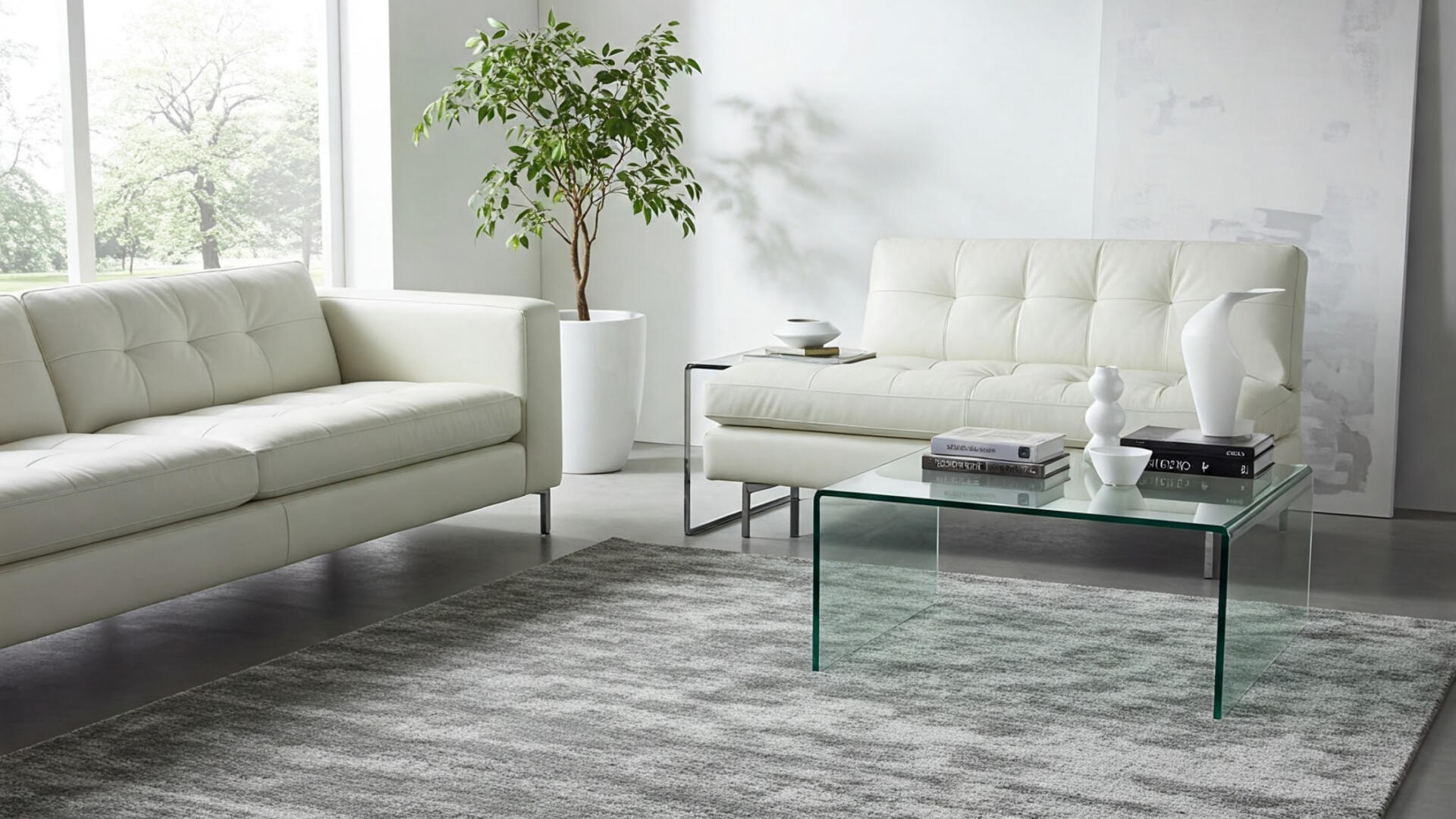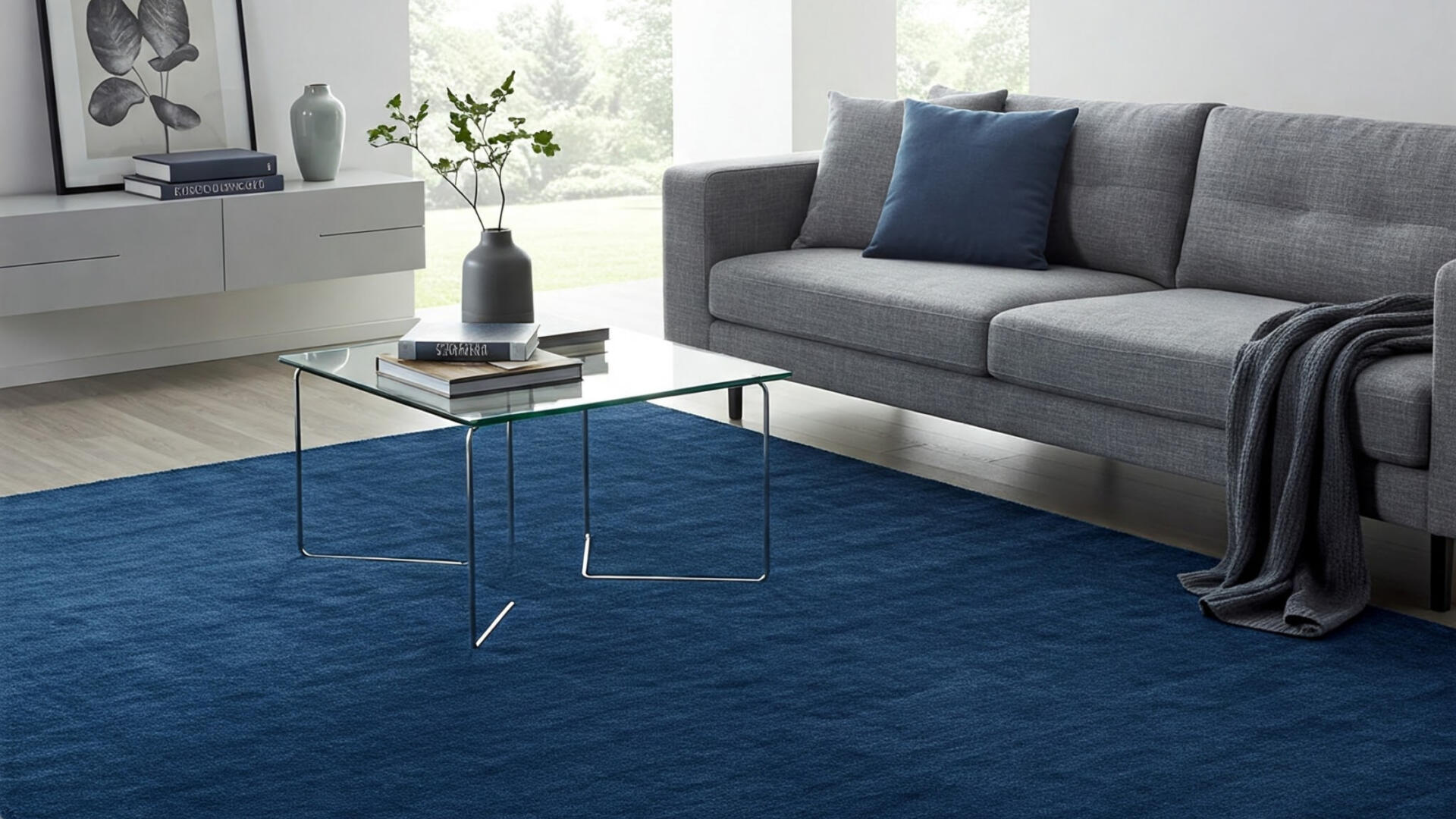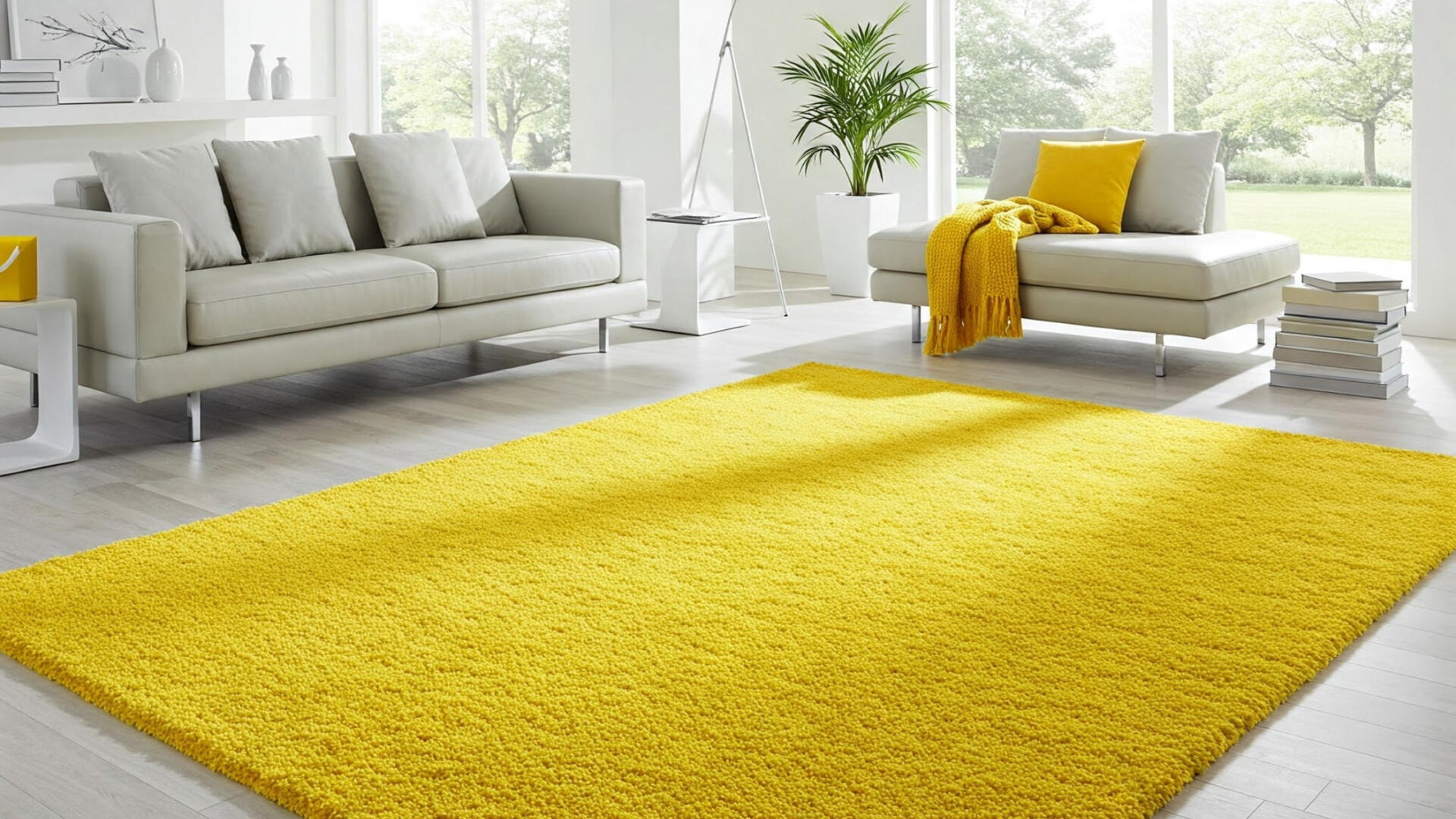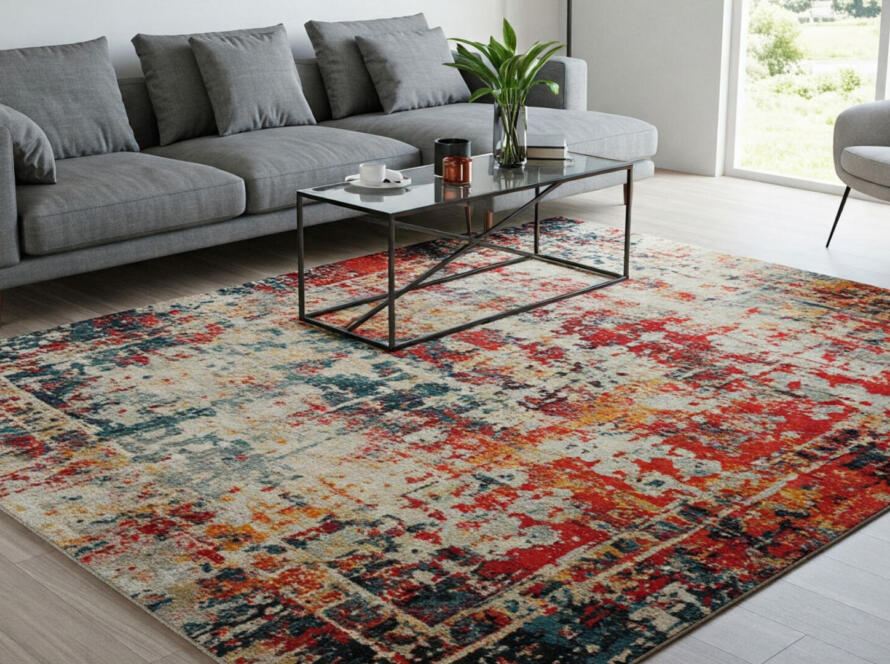In today’s design world, every detail matters. Carpets are integral design elements and their colours influence the mood, energy and functionality of a room. We believe that understanding the psychology behind carpet colours empowers homeowners and designers. It eases the decision making process. Different hues and combinations of them affect the way we feel and interact in a space.
Understanding Colour Psychology
Colour psychology examines how colours impact our moods, emotions and behaviour. Responses to colour can be subjective and culturally influenced. However, many psychological responses remain universal. The best example would be the impact of warm colours vs cool colours. Warm colours such as red and yellow often evoke energy and warmth. Cool colours like blue and green instill calm and relaxation. With carpets, the colour we choose can transform a room’s ambience. They can turn a bland space into a vibrant one.
In interior design, carpets serve as a canvas where colour meets texture. They create a foundational layer that ties together furniture, lighting and architectural features. The interplay of colour and texture can lead to unexpected benefits. A red carpet may evoke passion and dynamism, while a blue carpet might encourage a sense of tranquility and focus.
The Impact of Warm Colours
Red: Energy and Passion
Red is a powerful colour. It is known to stimulate the senses, evoke strong emotions and even raise energy levels. A red carpet can transform an entryway into an inviting, dramatic space, making it a statement piece in a home. However, red should be used with care. When overused or placed in spaces where calm is desired, like bedrooms or meditation rooms, red may feel overwhelming. Instead, consider red in moderation or as an accent colour. When paired with neutral tones or balanced with cooler hues, red can offer both vitality and sophistication.
Orange: Creativity and Optimism
Orange is associated with warmth, enthusiasm, and creativity. In design, orange carpets are a great way to infuse a room with an upbeat vibe. They stimulate conversation and encourage interaction, making them ideal for social spaces such as living rooms, dining areas or studios. Orange carpets work well when combined with earth tones or soft blues. These pairings reduce the intensity of orange while maintaining its energetic appeal.

Yellow: Cheerfulness and Clarity
Yellow is associated with joy, optimism and mental clarity. A yellow carpet can brighten up a space, instantly making it feel more cheerful and welcoming. However, the impact of yellow depends on its shade. Soft, buttery yellows create a gentle and calming environment. Brighter, more saturated yellows tend to energise and captivate. In workspaces or kitchens, a yellow carpet can enhance focus and stimulate creative thinking. When balanced with cool colours like grey or blue, yellow carpets can provide an ideal contrast that is inviting and stimulating.
The Influence of Cool Colours
Blue: Calm and Focus
Blue is one of the most universally loved colours in design due to its calming properties. Blue carpets can create a serene atmosphere ideal for bedrooms, bathrooms or offices. The psychological effects of blue include reduced stress and increased productivity. This makes it a popular choice in modern, minimalist interiors. Light blue hues evoke a sense of openness and airiness, while darker blues impart a feeling of depth and sophistication. Pairing blue with natural materials such as wood or stone can further enhance its calming influence, creating refreshing spaces.
Green: Balance and Renewal
Green is often associated with nature. It symbolises balance, growth and renewal. It is one of the most versatile colours for carpets. A green carpet can instantly breathe life into a room, connecting indoor spaces with the natural world. In environments where a calm yet invigorating atmosphere is desired like in living rooms, bedrooms and study areas, green is an excellent choice. Green carpets are known to promote concentration and harmony. Green works beautifully when paired with neutrals or natural textures, reinforcing a sense of well-being and balance.
Purple: Creativity and Luxury
Purple is a colour rich in symbolism. Historically associated with royalty and luxury, purple exudes creativity and sophistication. A purple carpet can be an excellent addition to spaces designed for reflection and creativity, such as study rooms or lounges. Lighter shades of purple, like lavender, bring calm. Deeper shades, such as plum create a more dramatic and opulent ambience. Purple is best combined with gold accents or muted greys.

Neutrals and Earth Tones
Neutrals and earth tones have their own subtle, yet profound psychological influence. They are often seen as safe choices that provide balance and continuity. While some might regard them as dull, these colours offer versatility and can complement any design style.
Beige and Taupe: Warm and Versatile
Beige and taupe provide understated elegance. These colours evoke warmth, calm and a timeless quality. A beige or taupe carpet can serve as the perfect backdrop for eclectic furniture and bold accent pieces. Their neutral look allows other colours in the room to shine, ensuring that the space remains harmonious and inviting. When paired with vibrant artwork or colourful decor, neutral carpets can tie the design together. They offer a subtle balance to more intense hues.
Grey: Modernity and Balance
Grey is the ultimate modern neutral. Its various shades can convey different moods. Lighter greys evoke serenity and simplicity. Darker greys are dramatic and grounding. A grey carpet is an excellent choice for contemporary spaces where sophistication and balance are key. Grey acts as a bridge between warm and cool colours, making it a flexible option that complements a wide range of design palettes. It also works well in high-traffic areas, where durability and ease of maintenance are important considerations.

Combining Colours for Dynamic Effects
While individual colours have distinct psychological impacts, combining hues can create complex and dynamic atmospheres. Thoughtful colour combinations can balance energy, calm and creativity, allowing each space to serve multiple functions.
Complementary and Contrasting Schemes
Complementary colour schemes use hues that are opposite to each other on the colour wheel. For example, blue and orange or red and green. These combinations can create a striking visual contrast that energises a space. These combinations can be particularly effective in social areas, where an interplay of excitement and balance is desired. However, it is important to use complementary colours in moderation. Overuse can lead to visual tension. So it is best to incorporate them as accent features rather than overwhelming the entire room.
Monochromatic Palette
A monochromatic colour scheme focuses on variations in lightness and saturation of a single hue. This approach can create a harmonious, layered look that is soothing and cohesive. A room adorned with different shades of blue can evoke a sense of calm, while subtle shifts in tone provide depth and interest. Similarly, using colours that are next to each other on the colour wheel, such as blue, green and teal can produce a naturally balanced environment. These approaches are ideal for spaces that benefit from a unified mood, such as bedrooms and meditation areas.

The Role of Patterns and Textures
The psychological impact of carpet colour is further enhanced by its patterns and textures. A richly patterned carpet can add complexity and visual intrigue, allowing for multiple hues to coexist in harmony. Textured carpets invite tactile engagement, making a space feel more layered and inviting.
A carpet with a subtle interplay of grey and beige not only provides visual balance but also a comforting tactile experience. We recognise that the interplay of colour, pattern and texture is essential in creating a space that connects with its inhabitants on an emotional and sensory level.
Creating Atmospheres with Carpets
The colours we choose for our carpets are powerful tools in setting the stage for how a space feels and functions. Here are some suggestions of how carpet colour can influence different environments.
Living Room: Social Space
In living rooms, carpets serve as a central design element that can ground the space or energise it. A living room with a deep red or vibrant orange carpet might be perfect for hosting gatherings. These colours naturally draw people together. A living room designed for relaxation will benefit from a cool blue or soft green carpet, which promotes a calm and serene atmosphere.
When selecting a carpet for social spaces, consider the type of interactions you want to encourage. Dynamic, bold colours can create an inviting environment that encourages conversation and connection. Softer, muted tones offer a peaceful retreat from the hustle and bustle of everyday life.

Bedroom: A Private Retreat
Bedrooms are places where we retreat from the stresses of daily life. The carpet colour in a bedroom can significantly affect our ability to relax and recharge. Cool colours like soft blues and gentle greens are ideal, as they promote a sense of calm and restful sleep. A carpet in a subtle red or earthy taupe can create a comforting and invigorating environment.
The key is to strike a balance. A colour or a combination that is neither too stimulating nor too dull. This ensures that the space remains suitable for rest and rejuvenation.

Offices: Creative Workspaces
In professional settings, carpet colour plays an important role in influencing productivity and creativity. Offices that utilise blue or green carpets tend to foster an atmosphere of concentration and clarity. These hues are known to reduce stress and enhance cognitive function, making them ideal for environments that require focus.
A burst of colour, such as a carpet with hints of orange or yellow, can stimulate creative thinking and energise the workspace. For creative studios or collaborative workspaces, combining cooler base colours with vibrant accents can yield a balanced atmosphere that supports concentration and innovation.

Bringing It All Together
We recognise that the choice of carpet colour is not simply an aesthetic decision. It is an integral part of creating spaces that reflect our emotions, aspirations and lifestyles. Our design philosophy is rooted in a deep understanding of colour psychology and its impact on human behaviour. We carefully design carpets that contribute to the overall narrative of a space.
Understanding the colour psychology of carpets is a journey that combines art and science. Each hue, whether bold or understated, has the power to influence the way we experience a space. From energising red and orange tones to calming blues and greens, the colours we choose speak volumes about the mood we wish to create. Even neutral shades such as grey, beige and taupe have their own unique way of maintaining balance. By selecting the right carpet colour, you are curating an experience. You are designing a space that tells a story, one that reflects your personality, your values and your aspirations.
Carpets have evolved from simple functional items to essential elements of interior design. The colour of a carpet plays a crucial role in setting the tone and influencing the psychology of a space. By thoughtfully considering the colour psychology behind your carpet choice, you can visually uplift your space.




